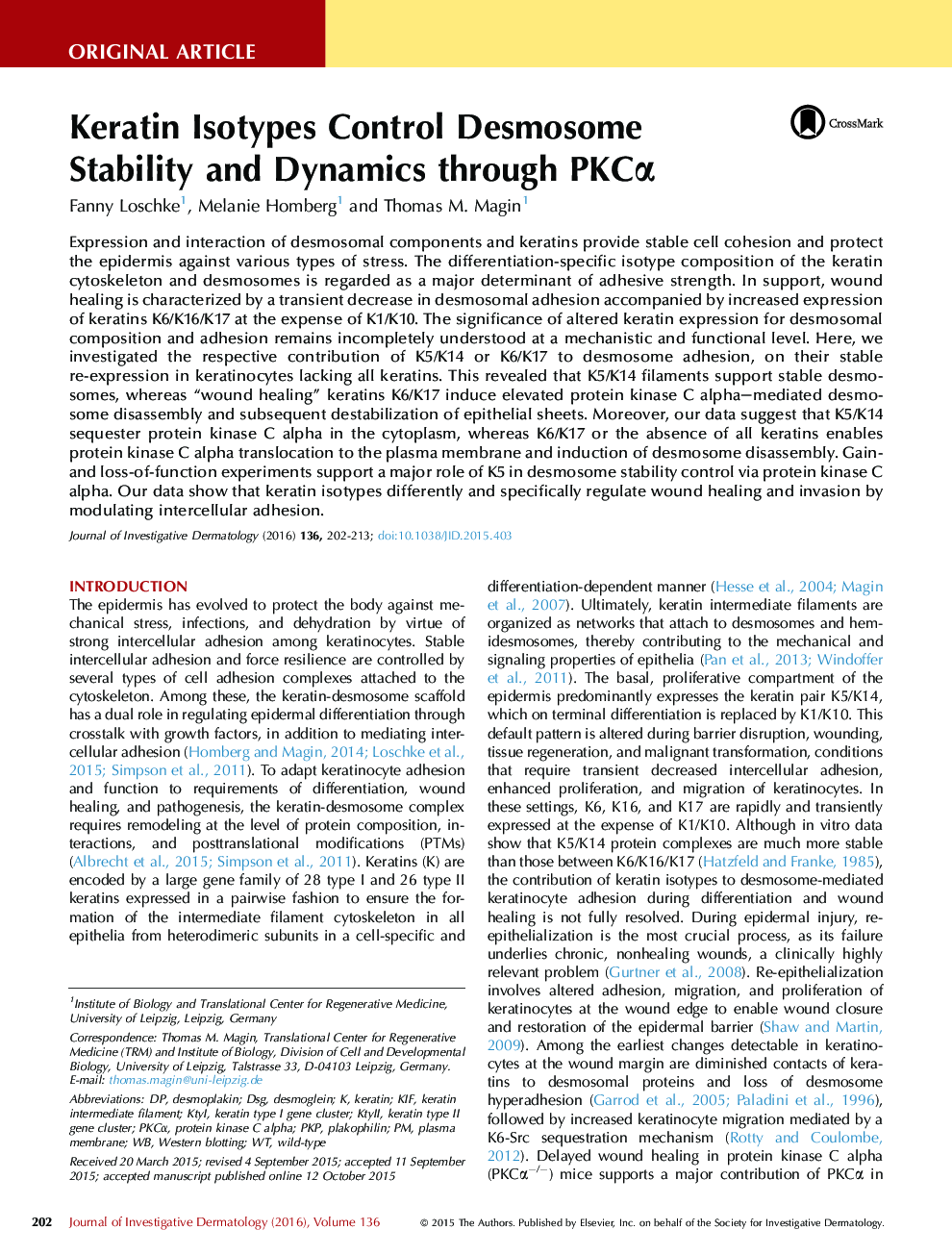| Article ID | Journal | Published Year | Pages | File Type |
|---|---|---|---|---|
| 6074790 | Journal of Investigative Dermatology | 2016 | 12 Pages |
Expression and interaction of desmosomal components and keratins provide stable cell cohesion and protect the epidermis against various types of stress. The differentiation-specific isotype composition of the keratin cytoskeleton and desmosomes is regarded as a major determinant of adhesive strength. In support, wound healing is characterized by a transient decrease in desmosomal adhesion accompanied by increased expression of keratins K6/K16/K17 at the expense of K1/K10. The significance of altered keratin expression for desmosomal composition and adhesion remains incompletely understood at a mechanistic and functional level. Here, we investigated the respective contribution of K5/K14 or K6/K17 to desmosome adhesion, on their stable re-expression in keratinocytes lacking all keratins. This revealed that K5/K14 filaments support stable desmosomes, whereas “wound healing” keratins K6/K17 induce elevated protein kinase C alpha-mediated desmosome disassembly and subsequent destabilization of epithelial sheets. Moreover, our data suggest that K5/K14 sequester protein kinase C alpha in the cytoplasm, whereas K6/K17 or the absence of all keratins enables protein kinase C alpha translocation to the plasma membrane and induction of desmosome disassembly. Gain- and loss-of-function experiments support a major role of K5 in desmosome stability control via protein kinase C alpha. Our data show that keratin isotypes differently and specifically regulate wound healing and invasion by modulating intercellular adhesion.
